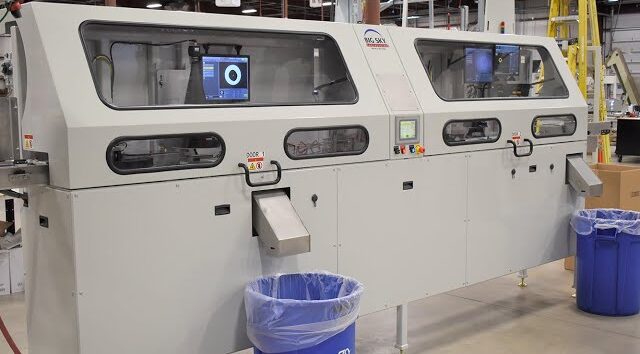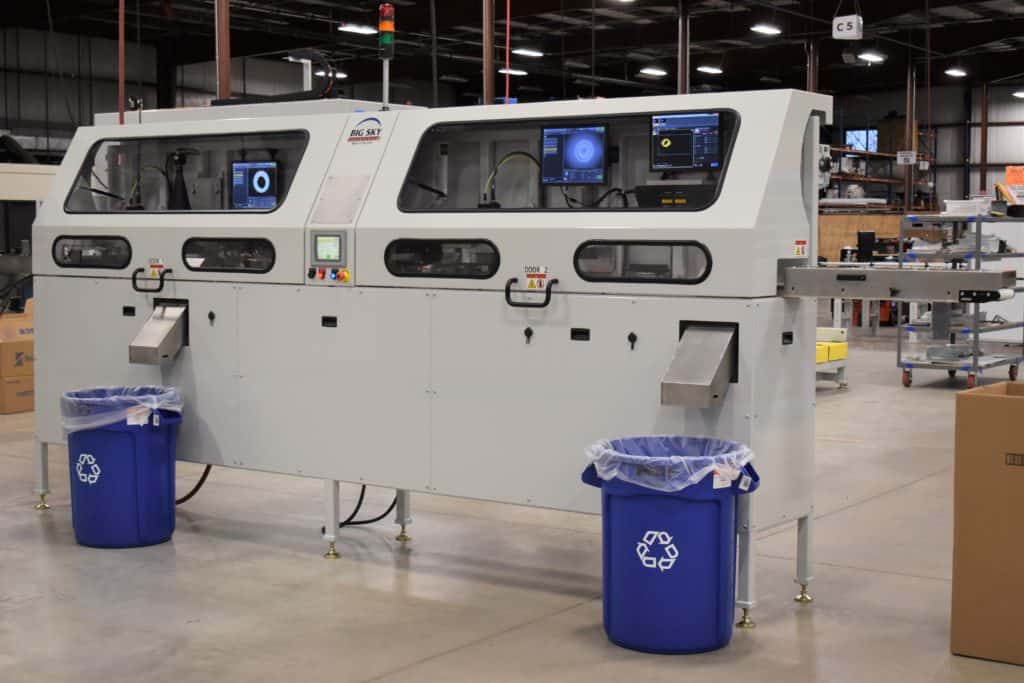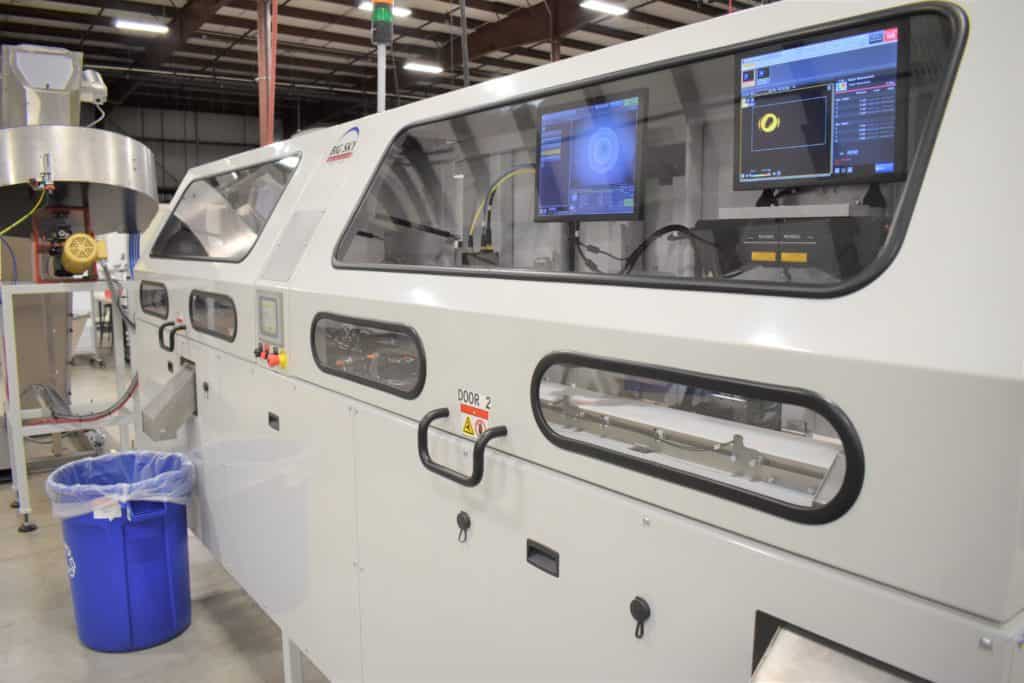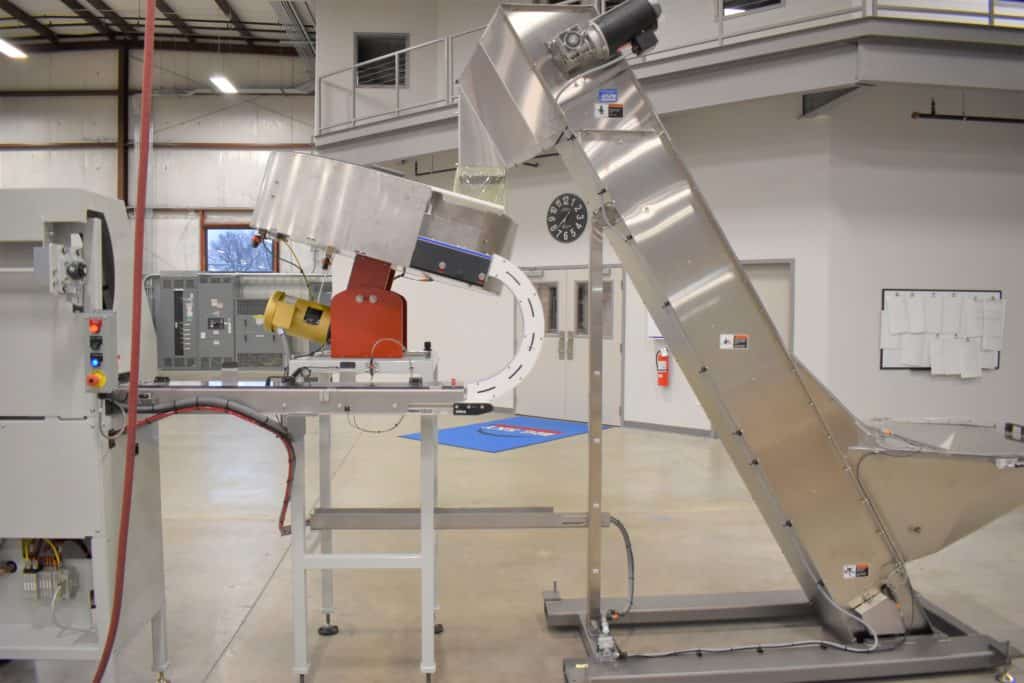SITUATION
The purchasing customer desired to inspect closure detects using 3-D, 2-D, and pericentric inspection systems. The machine requirements included the machine to handle a large variety of colored closures. The machine requirements included producing at a rate of 120+ Closures Per Minute.
OPPORTUNITY & IMPLEMENTATION
Integrated Closure Sorter/Feeders- A bulk hopper supplies the elevator with closure parts. The elevator delivers the closures into the feeder bowl. The feeder bowl orientates the caps into the in-feed track assembly.
Micrometer Inspection- Closures enter the dial wheel #1. The Micrometer inspection is activated. If the closure fails, the micrometer inspection rejects air blast triggers. The rejected parts then accumulate in a bulk bin outside of the machine.
Pericentric Inspection- Closures pass under the pericentric inspection lens, If the closure fails, the micrometer inspection rejects air blast triggers. The rejected parts then accumulate in a bulk bin outside of the machine at reject station 1.
2D Inspection- Closures travel under the 2-D inspection system, If the closure fails, the micrometer inspection rejects air blast triggers. The rejected parts then accumulate in a bulk bin outside of the machine at reject station 2.
3D Inspection– Closures travel under the 3D inspection system, If the closure fails, the micrometer inspection rejects air blast triggers. The rejected parts then accumulate in a bulk bin outside of the machine at reject station 2.
DESIGN FEATURES & SPECIFICATIONS
- 3 Part Inspection Displays
- Dual Reject stations & chutes.
- Allen-Bradley Human Machine Interface
- Upper and Lower Inspection Windows.
- Multiple USB QuickPorts
- Belted conveyor with encoder feedback
- Structural Steel Welded Frame
- Belted conveyor with encoder feedback
- Structural Steel Welded Frame
Machine Dimensions: 33’L x 5’W x 8’H
Power Requirements: 480 VAC, 3 Phase, 30 Amp




